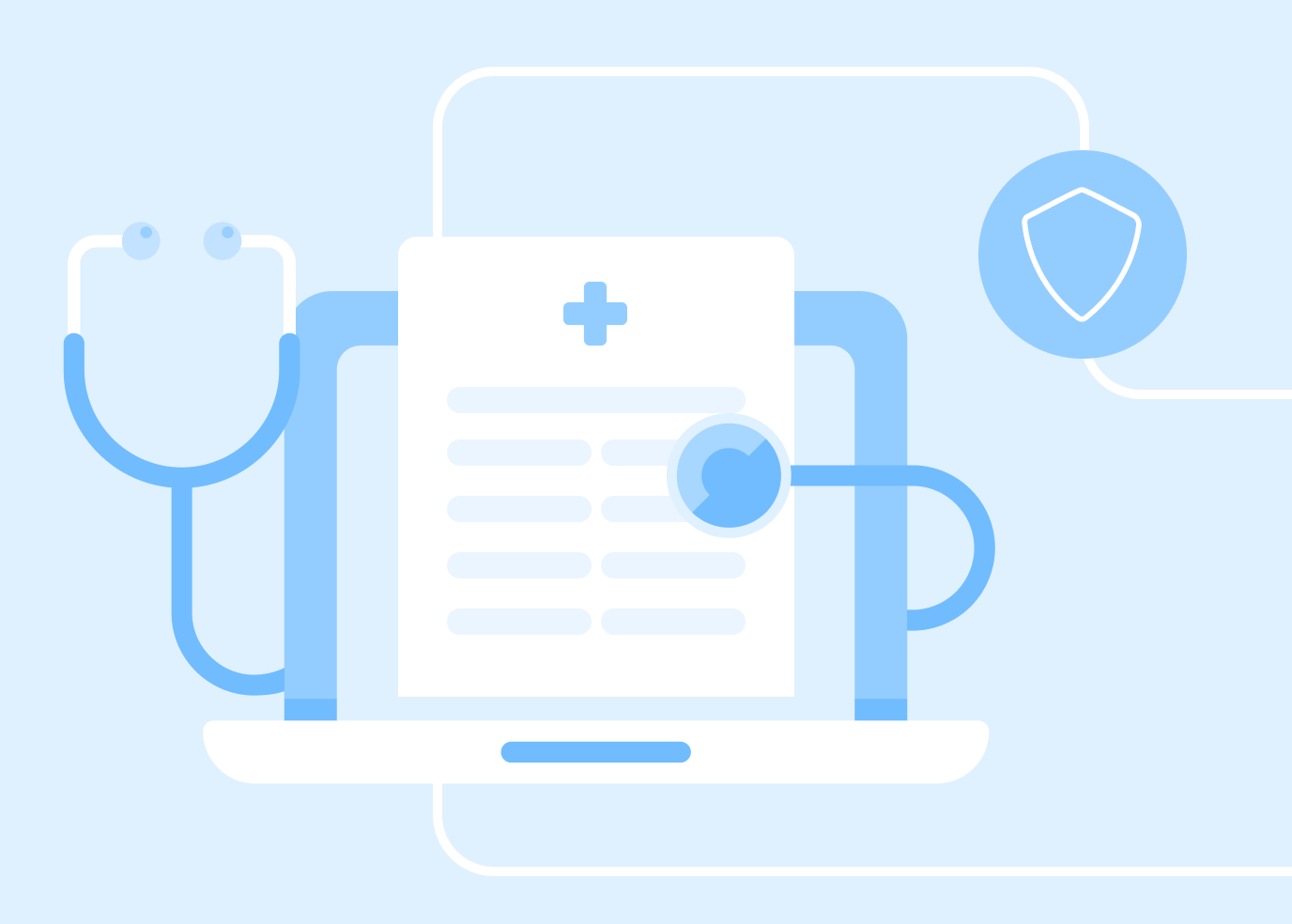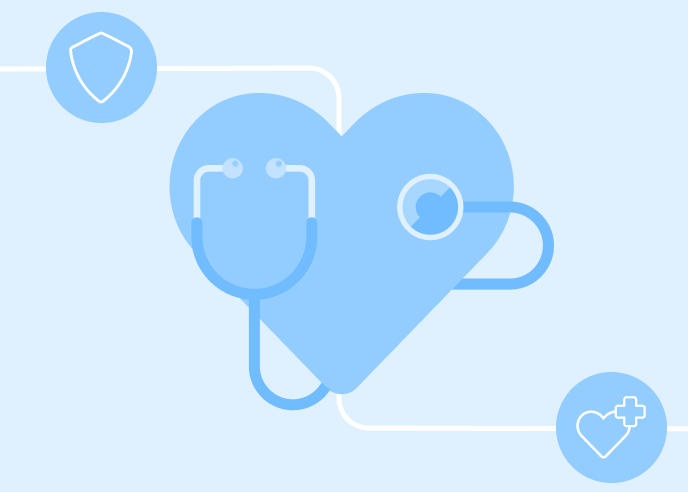HIPAA rules can be tricky to navigate but violations carry serious consequences, including hefty fines and reputation damage, not to mention putting patient safety and privacy at risk. So, how can you ensure your data collection is HIPAA compliant?
In this guide, we’ll cover the basics of HIPAA requirements and what steps your organization can take to remain compliant by maximizing data security and privacy.
What is HIPAA?
Healthcare data is one of the most valuable types of personal information—often considered more valuable than even credit card data. First introduced in 1996, HIPAA, or the Health Insurance Portability and Accountability Act, is a federal law that provides rules about the privacy and security of protected health information (PHI).
This act includes the HIPAA Privacy Rule, which sets the standard for how health information can be used and disclosed as well as an individual’s rights to control. The act also includes the HIPAA Security Rule, which applies specifically to securing and protecting electronic protected health information (ePHI).
Why does HIPAA matter when it comes to web forms?
Healthcare organizations often handle HIPAA-protected data in their web forms and other data collection methods. For instance, online patient registration forms collect demographic information and medical history, requiring safeguards to keep data confidential. The data protected by HIPAA is called protected health information (PHI) or electronic protected health information (ePHI).
What qualifies as PHI?
PHI includes any information identifying an individual and relating to their health status, healthcare services received, or payment for healthcare. For example, an online appointment scheduling system collecting patient names, contact information, and appointment dates qualifies as PHI.
- Patient names and birthdays
- Contact information
- Unique identification numbers (Social Security, health insurance, biometric)
- Photographs and digital images
- Dates pertaining to treatment or medical care
HIPAA requirements must be followed by all covered entities (healthcare providers, health insurance, and clearinghouses) and business associates involved in data collection and management of PHI. These organizations must also only use software and tools that maintain HIPAA compliance. In short, all organizations involved with PHI must follow strict rules for how to store and exchange medical data as well as protect it against unauthorized access.
PHI includes any information identifying an individual and relating to their health status, healthcare services received, or payment for healthcare. For example, an online appointment scheduling system collecting patient names, contact information, and appointment dates qualifies as PHI.
How to create HIPAA-compliant Forms
HIPAA-compliant forms must meet three criteria: secure data collection and storage methods, patient consent, and user authentication and access controls. See below for details.
| HIPAA-Compliant Form Design | What to do |
| Secure data collection and storage | Use encryption protocol Transport Layer Security (TLS) for data collected in transit and at rest. Utilize encryption methods like Advanced Encryption Standard (AES) with a minimum key length of 128 bits to secure data. |
| Patient consent | Obtain written consent from patients before sharing their information, even if it’s submitted through a webform, email, or referral platform. |
| Access controls and authentication | Enforce strong password policies, implement multi-factor authentication, and assign role-based access controls to restrict access to PHI. Conduct regular access reviews to ensure authorized personnel have appropriate access privileges. |
Ways a web form can violate HIPAA
| Violation | Description |
| Unsecured Transmission of PHI | Lack of encryption or secure transmission protocols may lead to unauthorized access during data transmission. |
| Insufficient Access Controls | Absence of proper authentication or authorization mechanisms violates HIPAA’s access control requirements. |
| Storage of PHI without Encryption | Storing patient information in an unencrypted format could result in data breaches, violating HIPAA’s security standards. |
| Failure to Obtain Patient Consent | Collecting sensitive patient information without proper consent violates HIPAA’s privacy rule. |
| Inadequate Data Retention Policies | Retaining patient information for longer than necessary or failing to implement proper data retention and disposal policies could lead to unauthorized access or misuse of PHI. |
With data breaches only ever trending up, it’s more important than ever for organizations to stay vigilant in compliant data collection practices.
Five tips for building HIPAA-compliant forms and workflows
Ensuring HIPAA compliance isn’t just about avoiding fines—it’s about safeguarding the trust individuals place in your organization with their private information. Here are five powerful strategies your organization can employ to protect sensitive health data and maintain HIPAA compliance.
1. Follow the principle of least privilege (POLP)
One of the main goals of HIPAA is to prevent individuals or organizations from misusing PHI. When handling sensitive data, be sure to follow POLP or the“minimum necessary” standard. This means an individual should only be allowed to see the data needed to complete their specific tasks. Creating access controls on different levels of patient information can help minimize accidental or intentional misuse of sensitive data.
Take these steps to implement POLP
- Clearly document what information is contained in systems with ePHI and PHI.
- Limit access to PHI with permissions based on an employee’s role and responsibilities.
- Train employees on what data they are authorized and not authorized to access.
- Create a policy and process for violations of the “minimum necessary” standard.
- Conduct routine audits to make sure employees have the correct level of access.
2. Strengthen cybersecurity protocols
Being security-conscious is one of the best ways your organization can stay HIPAA compliant. While HIPAA compliance does not automatically mean data security, you must prioritize both to minimize violations and threats. A good way to safeguard your organization and sensitive information is by implementing or strengthening cybersecurity policies.
Cybersecurity policies like these provide a standard for how your employees should handle medical data:
- Using strong passwords and changing them routinely
- Secure login with two-factor authentication
- Using only secure networks, devices, and software
- Staying alert to phishing and reporting attacks
- Only accessing data if authorized to do so
Your organization’s cybersecurity or IT team should also conduct routine risk assessments, data audits, and vulnerability scans. These tests ensure the normal functioning of hardware and systems while making sure vulnerabilities are spotted and resolved quickly.
3. Establish an employee training program
Without proper knowledge of HIPAA requirements, healthcare employees become the biggest risk for data breaches. In fact, healthcare employees account for 39% of all medical data breaches. While these breaches may not be malicious, they still result in serious consequences for organizations and the patients involved.
Many organizations provide free HIPAA training courses for healthcare professionals. Routinely offering this education at your organization can help reduce the risk of a data breach. It also ensures that your entire organization remains up-to-date on HIPAA changes. Comprehensive HIPAA training should include:
- The importance of keeping PHI protected
- What is covered under HIPAA requirements
- How HIPAA protects PHI
- Best practices for staying HIPAA compliant
- Common cyberattacks to watch for
4. Develop an incident response plan (IRP) for handling data breaches
No organization is completely safe from a cyberattack or data breach. It’s critical that your organization is prepared for an event and has a protocol established for handling breaches. Having well-documented steps and defined roles in an IRP to respond to and report the incident is part of being HIPAA compliant. Be sure employees are aware of the protocols and processes before a data breach occurs. Run a “fire drill” to test and refine your IRP and see if any breakdowns occur or additional steps need to be added.
HIPAA requirements also provide rules for notifying individuals affected by a data breach. This HIPAA Breach Notification Rule outlines the steps your organization must take if PHI is compromised. These can include immediately notifying patients involved (or potentially involved), the Media, and the Department of Health and Human Services, all generally within 60 days of the incident occurring.
5. Only integrate with HIPAA-compliant software
Investing in HIPAA-compliant software and tools designed for healthcare organizations is a shortcut to ensure data security and regulatory compliance. Examples include electronic signatures and authentication solutions and integrating compliance features into existing systems and workflows.
Organizations must be aware of the risks associated with third-party software that has access to medical data. These digital technologies can include patient scheduling tools, EMR/EHR systems, patient engagement platforms, or data collection and web form platforms. Unless otherwise stated, the software is not HIPAA compliant by default, so it’s important that your organization audits all third-party tools with access to ePHI for HIPAA compliance.
>> Download the HIPAA Compliance Checklist <<
Ensure your organization’s IT or cybersecurity team follows a clear policy for downloading and using software. Prioritize clearing all software before use to prevent data security vulnerabilities. Additionally, regularly monitor and conduct vulnerability scans of all third-party software to maintain security and HIPAA compliance.
Understanding HIPAA compliance is a challenge, but it is necessary to keep sensitive health information safe. It is the responsibility of your organization to understand the details of HIPAA compliance requirements and follow regulations. FormAssembly’s HIPAA-compliant data collection platform makes it easy for your organization to gather health information worry-free.
To learn more about HIPAA-compliant form building and other strategies for improving healthcare data collection watch our webinar, The Prescription for Better Healthcare Collection on-demand.


